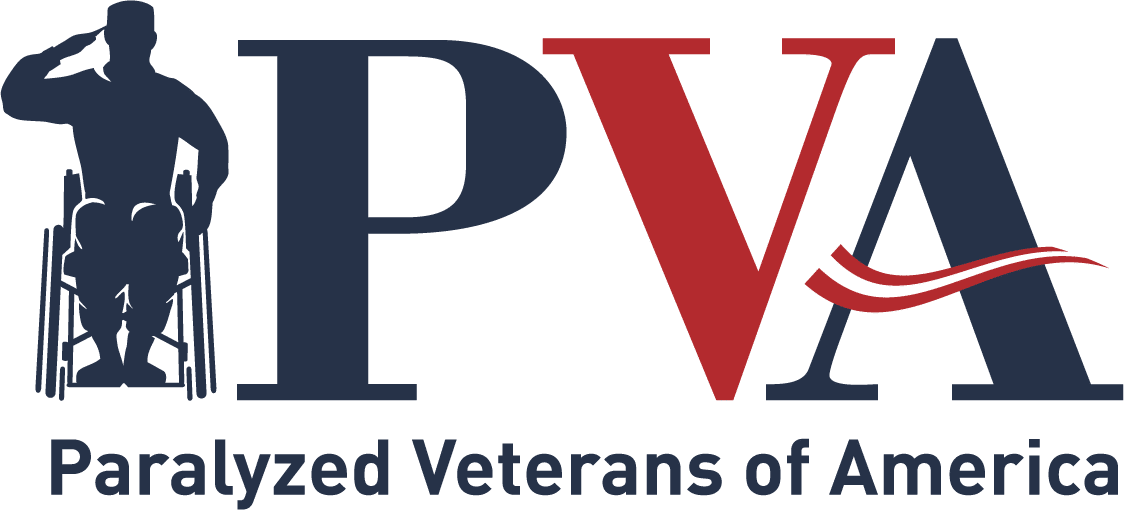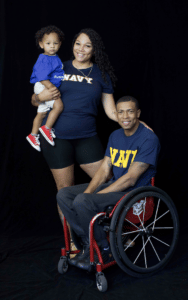Help Disabled Veterans Start Careers
Posted By PVA Admin on October 24, 2020
October is National Disability Employment Awareness Month, and this year’s theme is “Increasing Access and Opportunity.” NDEAM is a time to celebrate American workers with disabilities and remind employers of the importance of inclusive hiring practices.
Veterans with disabilities experience a higher level of unemployment than the rest of the veteran population, despite the fact that studies have shown individuals with disabilities are assets to an employer: they have a proven ability to adapt; are experienced problem solvers and bring unique perspectives to the job; have a high work quality; and have a higher retention rate.
Twenty-five percent of individuals leave the military with a service-connected disability – and I was one of them. Heartbroken, physically broken, and with little fanfare, I walked away after five and a half years of service in the U.S. Army after sustaining injuries during basic training that eventually led to medical discharge. I had planned to serve my whole career in the Army and this sudden turn devastated me and shattered my dreams.
As I prepared to exit the service, I went through mandatory career readiness training, taking a barrage of tests and meeting with a VA career counselor; but these exercises were inadequate for my needs. When I explained I would be using the next couple of years to recover from my injuries and care for my children, my counselor’s response was, “What a waste of your time and talents.”
What followed my first couple years after discharge was a spiral into depression, suicidal intent, and worst of all, utter loneliness. For 12 years I was unable to work outside the home because I was serving as a caregiver for my three children who all fall on the autism spectrum, while also learning how to manage my disabilities. Ultimately, I found immense satisfaction, became involved in my community, and learned new skills in the years I volunteered with my local Autism Society chapter.
My experience highlights why a more holistic approach is necessary to prepare veterans with disabilities for success after they leave the military. Most conversations about what leads to a successful transition focus solely on employment, but veterans have individual needs. Some will not be able to participate in the workforce, such as those who left service to provide caregiving (to an aging parent or young children for example), those who are still recovering from their wounds and are unable to seek employment for a while, or others who are unable to work due to the nature of their injuries or disorders sustained in service.
Education, volunteer work, and community service can help veterans get involved and stay engaged in their communities as well as increase mental health by providing purpose and meaning. It can also set them up with skills they need for the civilian workforce if that is their goal down the line.
Paralyzed Veterans of America’s employment program, PAVE, takes all these options into account and stands at the forefront of employment and community engagement for veterans with disabilities. PAVE counselors and employment analysts meet the needs of each individual veteran. They are specially trained to walk through the conversation with a veteran to learn what their capabilities are and what supports they need to ensure success in the workplace. They assist with resume writing, interview skills, and other typical tasks just as many employment programs do.
But PVA’s help doesn’t end there. Once you are a PAVE client, you are a client for life. They follow-up to ensure your employment is successful and meeting your needs. When it is time to ask for a raise or promotion, they assist with that process. In the military, pay raises and promotions are based on time in service and the salaries are predetermined so these processes are unfamiliar to veterans.
PAVE focuses on getting the veteran into a career if that is what they desire. And because veterans who can only work part-time often feel passed over by local and state employment services as they rush to serve those who are more easily employable into full-time jobs, PAVE makes sure those looking for part-time employment are not forgotten. For those who are unable or uninterested in paid employment, PAVE can assist with volunteer work and help veterans access the training to develop needed skills.
No matter what path a veteran takes, it is important they understand their rights under the Americans With Disabilities Act, whether they have a service-connected rating now or acquire a disability later.
Now that I understand what my rights under ADA are, what accommodations are, and how to ask for them, I have been successfully and gainfully employed for the last three years. As a veteran whose injuries require accommodations in order for me to be successful, I was dumbfounded when I learned I could ask for my college, university, and employer to provide such accommodations. All this time I had just been suffering through the day and then going home and laying down until the next day, gradually increasing my pain medications until my brain felt foggy and gross. Workplace accommodations can make immeasurable differences on long-term work success, yet they are rarely a part of transition conversations.
In fact, even the word ‘accommodations’ has a different meaning to veterans. To someone who served in the military, the word accommodations is used with regards to your lodging. So, when I was asked at a job interview if I needed accommodations, I said no, because I had a house (I also thought it odd they were asking about my living situation at a job interview).
It wasn’t until my children needed accommodations to be successful in school, that I learned civilians use the word “accommodations” differently. But even in my dealings with many of the newer veteran service organizations, I have experienced challenges in receiving reasonable accommodations in order to fully participate in their programming.
As an example, I was at a service project where we were cleaning up a national park facility. I had identified ahead of time that I had a disability and what my limitations were and what accommodations I would need. When I arrived, the volunteers were lifting 35-pound cinder blocks, which I could not do. When I identified my disability and asked for a different task I was told to, “stand over there and supervise.” Talk about demoralizing; I was embarrassed and almost left the event!
Luckily, I caught a park ranger who was walking by, explained the situation, and asked if they needed any other help. Another disabled veteran heard us talking and wanted to help too. She and I spent the next three hours folding and organizing pants for the new rangers and became best friends in the process.
While we are starting to see a number of organizations working to help integrate veterans into their communities, the burden should not fall on their shoulders alone. The Department of Labor’s Transition Assistance Program (TAP) should include information for those veterans who may need accommodations to be successful in the labor market as well as information for those who may be unable to work to help them understand the value they bring as a volunteer or simply as a member of their communities.
If you know a veteran or veteran family member who is struggling to gain or maintain employment due to their disabilities, let them know about PVA’s PAVE program. Educate your Members of Congress on the need to add ADA information to the TAP curricula. We know a successful transition leads to so many positive results for the veteran, and we know loneliness is a key symptom in suicide.
Let’s use this National Disability Employment Awareness Month to focus on ensuring these men and women reach their full potentials and aren’t left behind.

